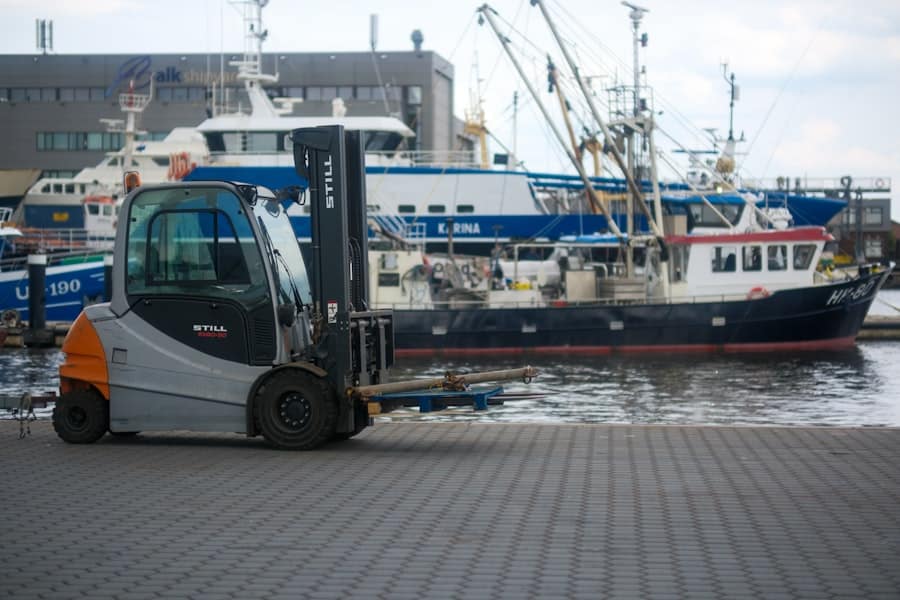Docker is a powerful platform that has revolutionized the way developers build, ship, and run applications. At its core, Docker utilizes containerization technology, which allows developers to package applications and their dependencies into standardized units called containers. These containers are lightweight, portable, and can run consistently across various computing environments, from a developer’s local machine to production servers in the cloud.
The concept of containerization is not entirely new; however, Docker has popularized it by providing an easy-to-use interface and a robust ecosystem that simplifies the management of containers. Containerization differs significantly from traditional virtualization. In a virtualized environment, each application runs on a separate virtual machine (VM) that includes not only the application but also an entire operating system.
This can lead to significant overhead in terms of resource consumption. In contrast, Docker containers share the host operating system’s kernel while maintaining isolation between applications. This results in faster startup times, reduced resource usage, and greater efficiency.
For instance, a single server can run multiple Docker containers simultaneously without the overhead associated with running multiple VMs, making it an attractive option for developers looking to optimize resource utilization.
Key Takeaways
- Docker is a platform for developing, shipping, and running applications using containerization.
- Installing Docker on your system is a straightforward process and is available for various operating systems.
- Creating your first Docker container involves writing a Dockerfile, building the image, and running the container.
- Managing Docker containers includes starting, stopping, and removing containers, as well as monitoring their performance.
- Networking and storage in Docker allow containers to communicate with each other and persist data using volumes and other storage options.
Installing Docker on Your System
Installation on Windows and macOS
For Windows and macOS users, Docker provides a desktop application called Docker Desktop, which simplifies the installation and configuration process. Users can download the installer from the official Docker website and follow the on-screen instructions.
Installation on Linux
For Linux users, the installation process typically involves using the package manager specific to their distribution. For example, on Ubuntu, users can install Docker by updating their package index and then installing the Docker Engine with a few simple commands in the terminal.
Post-Installation Configuration
After installation, it is essential to start the Docker service and ensure it runs automatically on boot. Additionally, users may want to add their user account to the Docker group to avoid needing superuser privileges for every Docker command. This step enhances usability while maintaining security.
Creating Your First Docker Container

Once Docker is installed and running on your system, creating your first container is an exciting step that showcases the power of this technology. The process begins with pulling an image from Docker Hub, which is a vast repository of pre-built images for various applications and services. For example, if you want to run a simple web server using Nginx, you can pull the official Nginx image by executing the command `docker pull nginx`.
This command downloads the image to your local machine, making it ready for use. After pulling the image, you can create and run a container using the `docker run` command. For instance, executing `docker run -d -p 80:80 nginx` will start a new container in detached mode (`-d`), mapping port 80 of your host machine to port 80 of the Nginx container.
This means that you can access the web server by navigating to `http://localhost` in your web browser. The simplicity of this command illustrates how Docker abstracts away much of the complexity involved in deploying applications, allowing developers to focus on building rather than configuring environments.
Managing Docker Containers
Managing Docker containers involves several commands that allow you to inspect, stop, start, and remove containers as needed. The `docker ps` command is essential for viewing all running containers along with their status and other details such as container IDs and port mappings. If you want to see all containers, including those that are stopped, you can use `docker ps -a`.
This command provides a comprehensive overview of your container ecosystem. Stopping a running container is as simple as using the `docker stop` command followed by the container ID or name. For example, `docker stop
If you need to remove a container entirely, you can use `docker rm
Networking and Storage in Docker
Networking in Docker is a critical aspect that enables containers to communicate with each other and with external systems. By default, Docker creates a bridge network that allows containers to communicate with one another using their IP addresses. However, users can create custom networks for more complex scenarios where specific communication rules are required.
For instance, creating an overlay network allows containers running on different hosts to communicate seamlessly as if they were on the same local network.
By default, any data created within a container is ephemeral; once the container is removed, so is the data.
To address this issue, Docker provides volumes and bind mounts as solutions for persistent storage. Volumes are managed by Docker and are stored outside of the container’s filesystem, making them ideal for sharing data between containers or ensuring data persistence across container restarts. Bind mounts allow users to specify a directory on the host machine that is mounted into the container, providing direct access to host files.
Docker Compose for Multi-Container Applications

As applications grow in complexity, managing multiple containers becomes increasingly challenging. This is where Docker Compose comes into play—a tool designed to define and manage multi-container applications using a simple YAML file format. With Docker Compose, developers can specify all necessary services, networks, and volumes in a single file called `docker-compose.yml`.
This file serves as a blueprint for deploying an entire application stack with just one command. For example, consider a web application that consists of a frontend service running on Nginx, a backend service using Node.js, and a database service using MySQL. Instead of manually starting each container with individual commands, you can define all three services in your `docker-compose.yml` file and then use `docker-compose up` to launch them simultaneously.
This not only streamlines the deployment process but also ensures that all services are configured correctly and can communicate with each other as intended.
Deploying Dockerized Applications
Deploying Dockerized applications involves several considerations beyond just running containers locally. When moving applications into production environments, developers must think about scalability, security, and orchestration. One common approach is to use container orchestration platforms like Kubernetes or Docker Swarm to manage clusters of containers across multiple hosts.
These platforms provide features such as load balancing, automatic scaling based on demand, and self-healing capabilities that restart failed containers automatically. Another important aspect of deployment is ensuring that sensitive information such as API keys or database credentials are handled securely. Docker provides mechanisms like secrets management and environment variables to help manage sensitive data without hardcoding them into images or source code.
Additionally, implementing CI/CD pipelines can automate the process of building and deploying Docker images whenever changes are made to the application codebase.
Best Practices for Docker and Containerized Applications
To maximize the benefits of using Docker and ensure efficient management of containerized applications, adhering to best practices is crucial. One fundamental practice is to keep images small by minimizing unnecessary layers and dependencies in your Dockerfile. This not only speeds up build times but also reduces storage requirements and improves deployment times.
Another best practice involves using multi-stage builds when creating images for production environments. Multi-stage builds allow developers to separate build-time dependencies from runtime dependencies by defining multiple `FROM` statements in a single Dockerfile. This means that only the necessary artifacts are included in the final image while excluding development tools or libraries that are not needed at runtime.
Additionally, regularly updating images to incorporate security patches and improvements is vital for maintaining application security. Using automated tools like Trivy or Clair can help identify vulnerabilities in images before they are deployed into production environments. In conclusion, understanding and effectively utilizing Docker requires familiarity with its core concepts and best practices.
From installation to deployment and management of multi-container applications using tools like Docker Compose, mastering these elements enables developers to leverage containerization’s full potential for building scalable and efficient applications.
If you are interested in learning more about the latest trends in technology, you may want to check out the article

